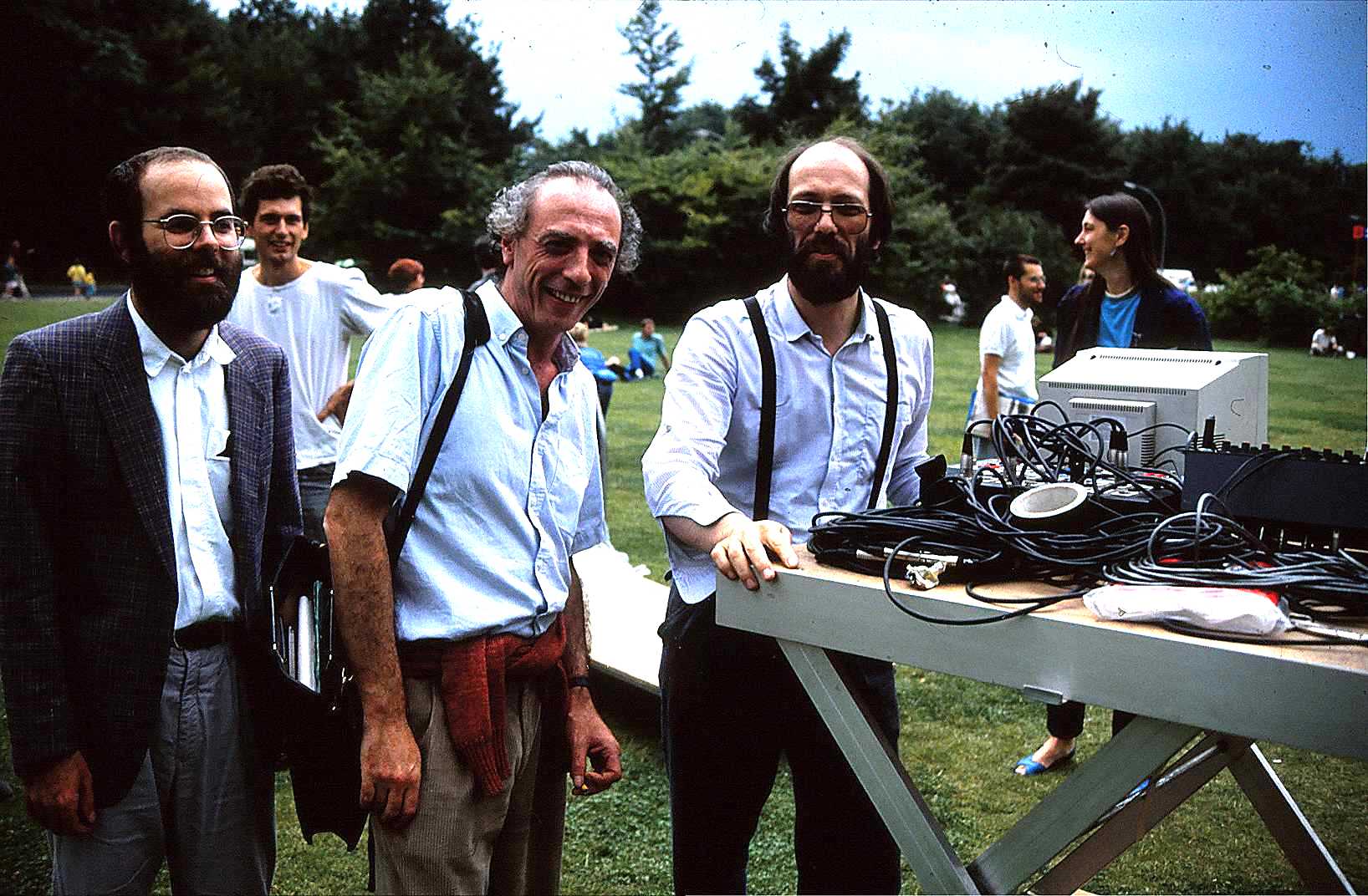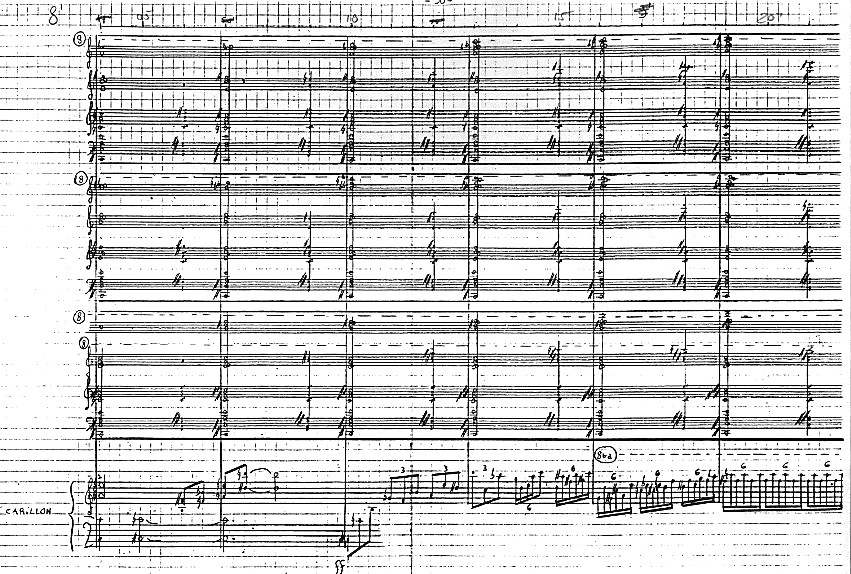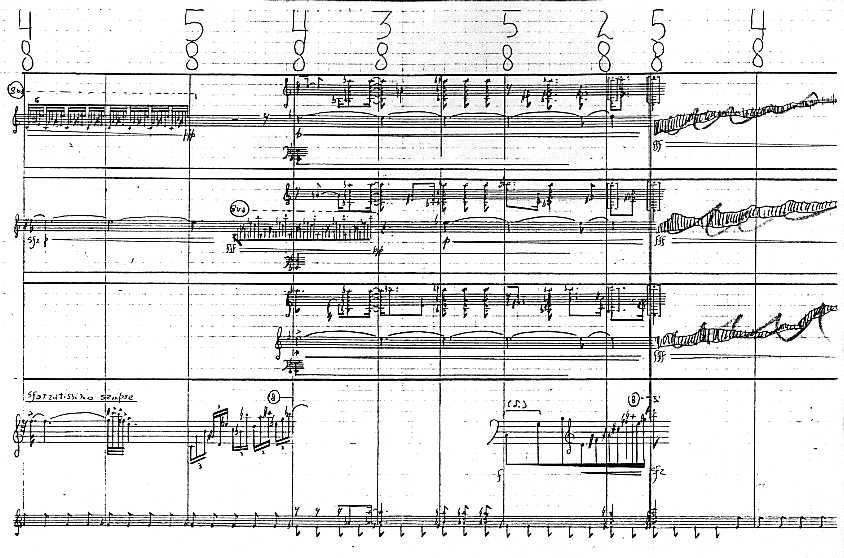Carillon Concert with
Electronics
as
part of the Workshop of Electroacoustic Music during
Berlin's year as Cultural Capitol of Europe 1988
August 20
and 21, 1988 at 2 p.m. and 6 p.m.
Jeffrey Bossin, Carillonneur, Berlin
Program
Avantgarde Carillon Music
I.
Music for Solo Carillon
Tower Music (1987) World
premiere Roy Hamlin Johnson
Music for Carillon No. 3 (1954) John Cage
For Carillon (1987) World premiere László Dubrovay
Berlin Fireworks Music/solo version (1987) Richard Felciano
Summer Fanfares (1956) Roy Hamlin Johnson
II.
Music for Carillon and Electronics
Vox veterrima for carillon, midi-keyboard, percussion and
tape (1988) World premiere
Ricardo Mandolini
Carillon: Jeffery Bossin,
Midi-keyboard: Ricardo
Mandolini, Director of percussion: Martin Schulz
Percussionists: Volker
Frischling, Robin
Minard, Stefan Thiele
and Rolf Tünnes.
Electronics: Folkmar Hein and Thomas Schneider.
Organized by CarillonConcertsBerlin and
the Workshop of Electroacoustic Music in cooperation with the
Electronic Studio of the TU Berlin and the support of the
Senator for Cultural Affairs
Ricardo Mandolini was born in 1950 in Buenos Aires, Argentina,
studied composition starting in 1977 at the Cologne
Musikhochschule, went on to work in electronic studios in
Gent, Cologne, Stockholm and Bourges and received several
international prizes for his electronic music. In 1978 he
worked in Berlin as a DAAD guest composer and from 1980
til 1986 worked with Folkmar Hein to produce several
pieces of electronic music in the electronic studio of the
Technical University of Berlin which were performed during
the electroacoustical music festival Inventionen.
Carillon
tower, tape recorder and mixer
|
 Jeffrey
Bossin, Ricardo Mandolini and Folkmar Hein
|
At
the mixer from left to right: Thomas Schneider, Bernd Schönhaar
and Folkmar Hein
|
The
carillon keyboard with the 53-page score of
Vox veterrima
|
 |
 |
Excerpts from the score of Vox veterrima.
The name Vox veterrima - "Voice From Ancient Times" or "Primeval Voice" - derives from the traditional role of the bell as the signal of the beginning of all important public events and activities. The work is built on the electronically manipulated sounds of bells. All of the bells of the carillon in Berlin-Tiergarten were recorded individually and this material subjected to a spectral analysis and then resynthesized in order to reconstruct the sounds of the bells. In addition to that Cmusic on a VAX-computer was used to create harmonic superimpositions of more than 100 bell sounds. The synclavier II was used to synchronize the elements of the first section. Mandolini created three different tracks of electronic sounds and motives played on the synclavier. The electronics were heard from three large loudspeakers placed on the same side of the tower, one to the left, one to the right, and one 20 metres up in it. The motion of the electronics from one loudspeaker to the other provided the piece with an extra spatial dimension. With a few exceptions the electronics are heard during the entire piece and are accompanied by the carillonneur. During the world premiere a pianist used a midi-keyboard to play on the hammers of the automatic playing system of the bells from c2 to c4 and four percussionists also performed.
Vox veterrima consists
of
two main sections of several parts. The first of these lasts
about thirteen minutes and consists of the sections Initia
nascendi (elements of
the creation, of the birth), Ignis ingens (huge fire), Divinum
testimonium (divine
testimony), Praeconium (pronouncement, glorification),
Concilia populi (assembly of the people), Intuitio
tenebris (sinister
presentiment) und Calamitas bellum (war disaster). The second part
lasts about three and a half minutes and consists of the two
sections Novum mysterium (new mystery) and Aestus
minantes
(immenent conflagration,
floods, passions). The work is carefully constructed and has
several dynamic climaxes. The composer uses different
combinations of electronic and instrumental sounds and
noises to produce a number of original and imaginative
textures. The individual elementes - arpeggios, arabesques,
cadenzas, repeated notes, tremolos, chords and the motives
developed from them – are introduced and then repeated and
developed further at certain intervals. The work begins with
a delicate dialogue of arabesques and repeated notes, played
electronically and on the carillon in the highest register.
During the following section Ignis ingens the texture gradually expands
downwards to include lower tones and the first main motive –
the repeated chord a1-c2-a-flat2-c3
– is played on the carillon three different times. Praeconium begins with two carillon
arabesques, the
same two heard in
both the electronics and the carillon at the beginning of
the piece. In Concilia populi two more main motives appear:
the carillon arpeggios d-sharp1-b1-d-flat2-g-flat2-b-flat2-d3
at the beginning and the electronic chord
C-sharp-c-sharp-f-a-c1-e1 about a
minute later. The first main motive reappears in the middle
of Intuitio tenebris, this time as a figure in the electronics composed
of a quarter-note, a dotted quarternote, an eighthnote and
two quarternotes. It is played again at the end of Calamitas
bellum, this time on
the lowest bells of the carillon where it ends the first
main part of the piece. Vox veterrima concludes with a fourth main
motive, a row of chords that are constantly repeated and
become continuously louder until they reach fortississimo. A
variant of the first main motive played on the carillon and
in the MIDI part end the work. The tremendous tension is
resolved by an electronic cadence in the form of a huge
glissando that drags the piece down into the depths.
During the performance the carillonneur has to play
exactly together with the other parts. I use the complete
score so I can follow the electronic music and the other
voices and see where I have to come in. In order to be able to
read the very small carillon notes I divide the 53 pages of
the score into five piles according to the register of the
carillon notes. In order to identify the pages belonging to
each group and put them in the proper order I numbered each
group with a differently coloured felt pen. When I
finish playing a page I quickly remove it in order to continue
on the next page under it. If there is no rest at the end of
the page I have to lay two or three pages next to each other
in order to be able to play them without any interruption. If
I have to change from one group to another I use an arrow at
the end of the page written in the colour of the next group to
be played. During all of this I must always remember to remove
all of the pages I have finished playing so that when I return
to a previously played group of pages I see the next one to be
played rather than the last one I ended with. I can hear the
electronics via loudspeakers in the playing cabin while I am
performing and I have a click track to que my entrance at
especially tricky spots. In the course of time I had to
simplify a few unplayable carillon passages a bit. The
percussion and MIDI parts were recorded in the electronic
studio and added to the electronics as additional
tracks, so that now one only needs a carillonneur, a suitable
carillon, the electronic accompaniement and a studio
technician in order to perform Vox veterrima. A revised version of the piece
which Mandolini made in 2005 appeared on the DVD 50
Years Studio TU Berlin which was released in the same year.